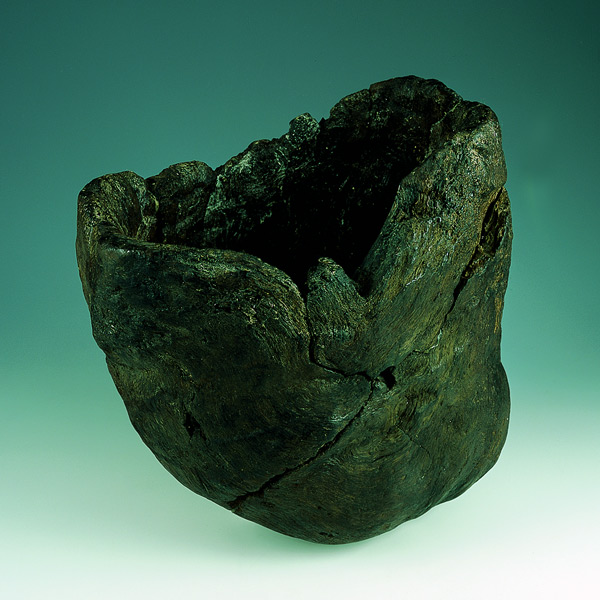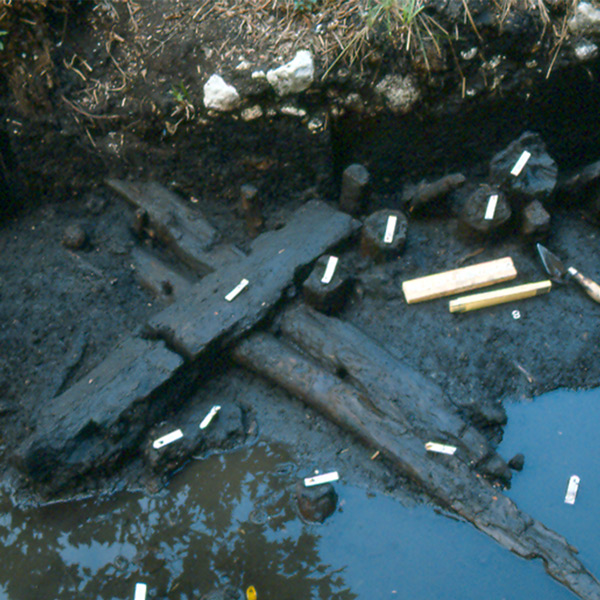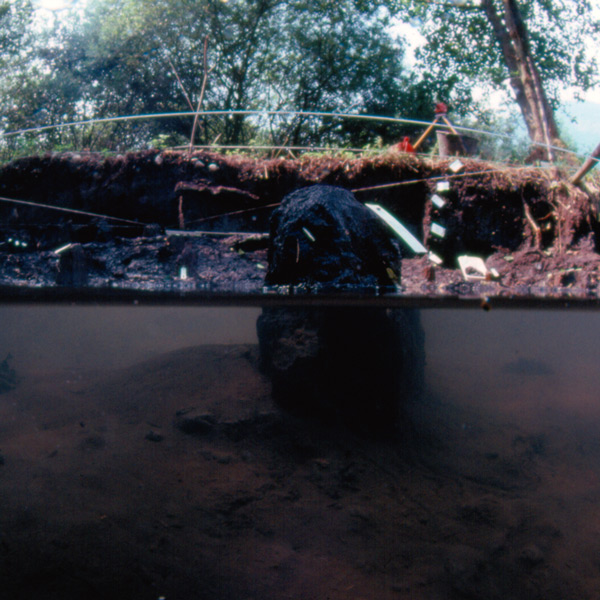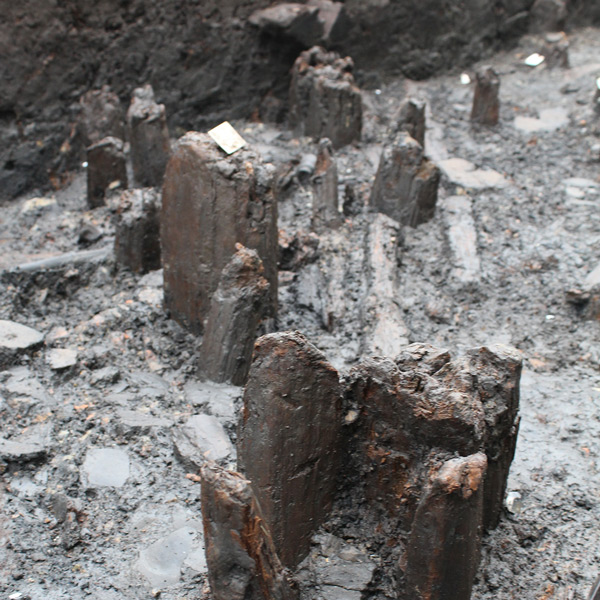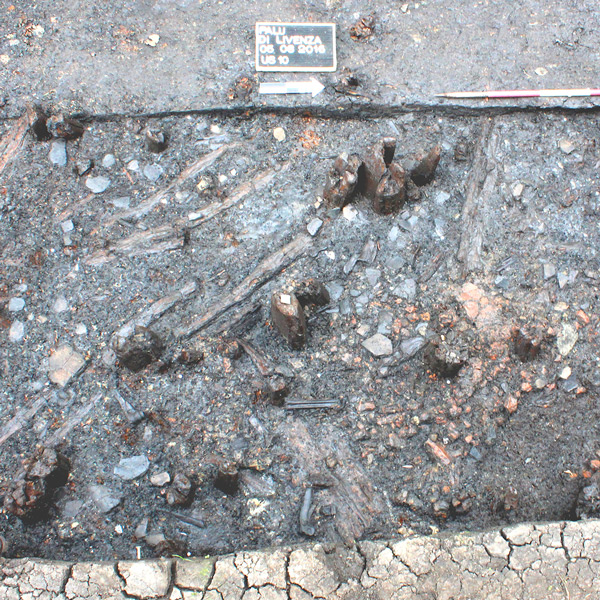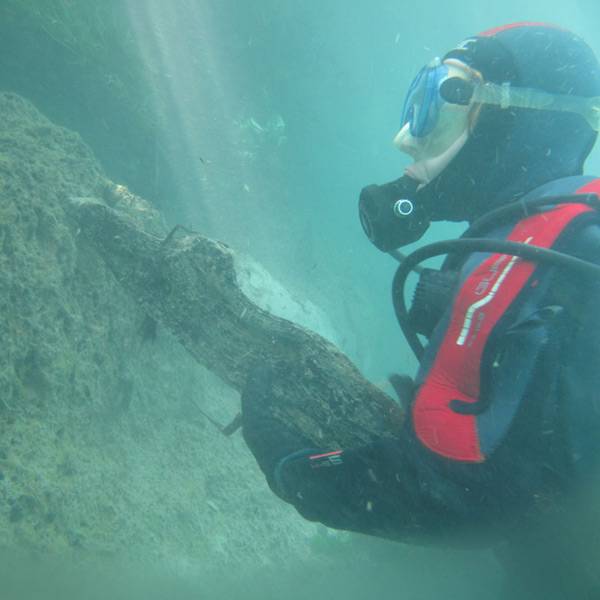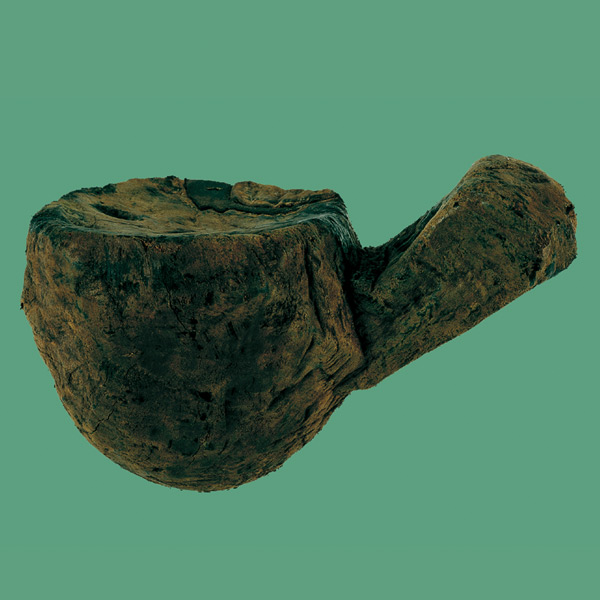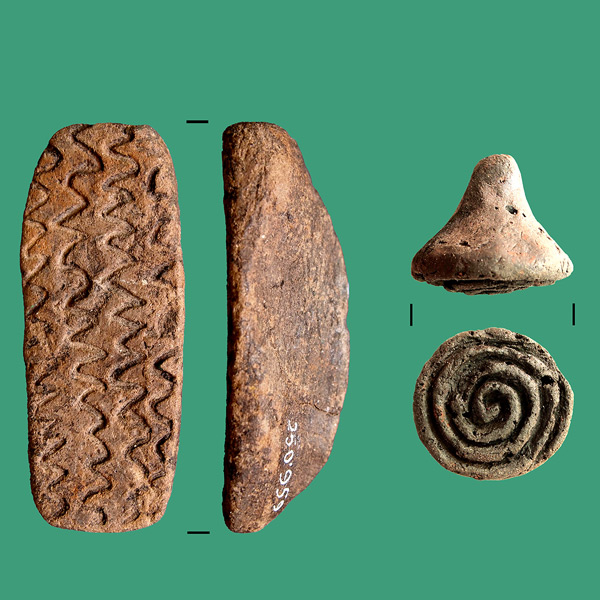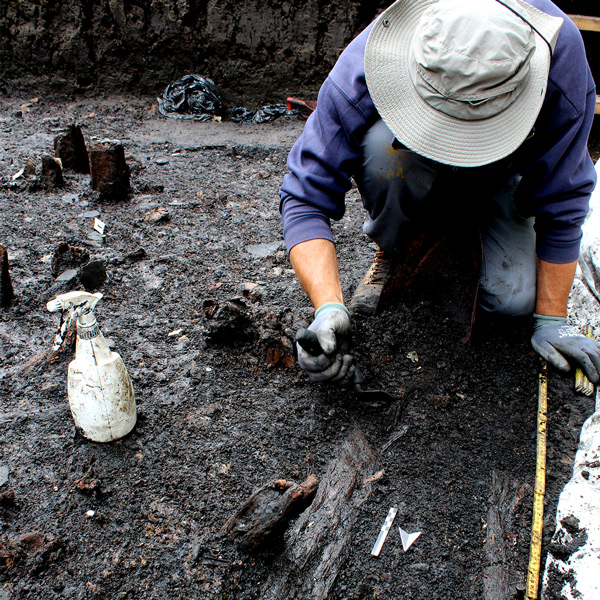Palù
The large amount of archeological finds demonstrates that Polcenigo’s precious and abundant environmental resources have always been its most valuable asset and have contributed to make the territory suitable for human settlements since prehistoric times.
The Palù, a wide marshy area at the foot of the mountains, is a place of great archeological and naturalistic interest. The area has been partly reclaimed but in prehistoric times was mostly occupied by marshes, ponds and islets. The earliest settlements date back to the early Palaeolithic, as attested by the lithic finds unearthed in the area.
The presence of a Neolithic pile-dwelling village (about 4500-3600 BC), organised in detached clusters of huts, is attested by the lithic finds and wooden material found during underwater explorations in the (19)80s and (19)90s. Flint scratchers, bulins and knives as well as flint arrowheads with rounded, stemmed or rectilinear bases are among the most common finds.
Worth mentioning are also the ceramic bowls with a square mouth, typical of the Neolithic culture named after that type of bowls, the pintadere, (used for impressing colours on a surface), the plates with a sharp rim and the biconical fusaroles. Fragments of plaster showing the marks left by the vertical beams used to build the huts have also been found.
On June 27th 2011 the Palù was recognised as a UNESCO site. It is one of the 111 European pile-dwelling sites in the Alps and the 19th in Italy. To celebrate the event further excavations were carried out in 2013.
The Palù is not the only archaeological site worth mentioning in Polcenigo. At the foot of the hill that hosts San Floriano rural park (Sottocolle), archeologists have found evidence of a necropolis that might have been used from the late Bronze Age up to the late Roman era.
Recent excavations, promoted by the archaeological group of Polcenigo (GR.A.PO.) have revealed traces of another Bronze Age settlement and of a medieval necropolis close to St Florian’s Church.
Soprintendenza Archeologica Belle Arti e Paesaggio del Friuli Venezia Giulia
